Have you ever wondered how sellers outsource products to sell on Amazon? One of the first steps to becoming a successful Amazon seller is finding and sourcing profitable products.
However, this process takes skill, time, and effort. Choosing the right sourcing method and supplier is critical, as factors like cost, quality, and logistics all play a role in your success.
That’s why having a clear guide can make things easier. Therefore, our Amazon agency put this together to help sellers understand their options and find the best approach for outsourcing products.
Table of Contents
Outsourcing Products to Sell on Amazon
Outsourcing products to sell on Amazon means sourcing inventory from external suppliers instead of manufacturing items yourself. This can involve working with manufacturers, wholesalers, or retailers to acquire products that you can list and sell on the platform.
Why Sellers Outsource Products to Sell on Amazon
There are many reasons why Amazon sellers outsource products. It depends on their business model, budget, experience, and long-term goals. Instead of creating their own products, sellers often choose outsourcing for benefits like:
- Outsourcing skips the time-consuming process of designing, testing, and manufacturing a product from scratch.
- Selling existing products with proven demand is often more predictable and less risky than launching a new one.
- It requires less capital since sellers can purchase inventory in smaller quantities instead of investing in manufacturing.
- Sourcing from suppliers is faster than developing a new product, enabling sellers to start selling sooner.
- Sellers can test different categories or trending products without committing to costly product development.
- With suppliers handling production and logistics, sellers can concentrate on managing their Amazon accounts.
Challenges of Outsourcing Products for Amazon Sellers
Even though outsourcing products offer many advantages, there are still challenges involved in the process. Sellers need to be aware of these obstacles to make informed decisions and avoid costly mistakes.
- With millions of sellers on Amazon, identifying high-demand, low-competition products is becoming increasingly difficult.
- Not all suppliers are trustworthy. Sellers must verify that suppliers can provide quality products and meet delivery timelines.
- Many intermediaries act as manufacturers but simply resell products at a markup, increasing costs without adding value.
- Suppliers claim they can manufacture a product but source it from elsewhere, leading to inconsistencies in quality.
- Ensuring product quality requires research, sample testing, and ongoing quality control measures.
- Poor inventory planning or supplier delays can lead to stockouts, which hurt rankings, or excess inventory, which ties up capital.
- Some suppliers lack the necessary certifications for compliance with regulations in the target market.
- Sellers must carefully analyze costs, shipping fees, and Amazon fees to ensure they can price products competitively while maintaining healthy profit margins.
5 Ways to Outsource Products to Sell on Amazon
There are many ways for a seller to outsource products to sell on Amazon, each offering different benefits and drawbacks. Choosing the right method depends on your business model, budget, and goals.
1. Liquidation Stores
Liquidation stores offer overstock, customer returns, and discontinued products at heavily discounted prices, making them a cost-effective sourcing method. Sellers can take advantage of rare or hard-to-find items, especially in categories like health and beauty, where customers are willing to pay a premium for discontinued products.
Pros of Liquidation Stores
- Extremely low product costs, leading to high-profit potential
- Opportunity to sell rare or discontinued items at premium prices
- Minimal upfront investment compared to wholesale or private labeling
Cons of Liquidation Stores
- Product quality and condition can be inconsistent
- Risk of damaged packaging or missing parts
- Must comply with Amazon’s policies for selling refurbished or open-box items
Best suited for:
Sellers who are skilled at inspecting and reselling products, willing to take on some risk for high-margin opportunities.
2. Working with Manufacturers
Private labeling involves sourcing generic products from manufacturers and adding your own unique branding and packaging. This approach allows you to differentiate your offerings without the need to develop a completely new product.
Pros of Working with Manufacturers
- Full control over branding, pricing, and product differentiation
- Potential for higher profit margins compared to reselling branded products
- Less direct competition since products are unique to your brand
Cons of Working with Manufacturers
- Requires significant upfront investment for packaging and branding
- Longer lead times due to production and shipping
- Managing supplier relationships and ensuring consistent quality can be challenging
Best suited for:
Sellers looking to create a distinct brand by modifying packaging and branding of sourced products while aiming for scalability in the long term.
3. Retail Arbitrage
Retail arbitrage involves purchasing discounted or clearance items from retail stores and reselling them on Amazon for a profit. This low-cost entry method allows sellers to start with minimal investment and capitalize on store promotions, seasonal sales, and clearance events.
Pros of Retail Arbitrage
- Low startup costs with minimal financial risk
- A quick way to start selling on Amazon
- Ability to take advantage of seasonal sales and store promotions
Cons of Retail Arbitrage
- Time-consuming sourcing process
- Limited scalability due to inconsistent product availability
- Competition can be high, and brand restrictions may limit what can be sold
Best suited for:
New sellers looking to get started with minimal investment and those who enjoy hunting for deals in retail stores.
4. Dropshipping
Dropshipping allows sellers to list products on Amazon without holding inventory, as suppliers handle fulfillment directly. This method requires minimal upfront investment, making it an appealing option for those looking to start selling with limited capital.
Pros of Dropshipping
- No need for upfront inventory investment
- Lower operational costs since fulfillment is handled by the supplier
- Easy to test different products without financial risk
Cons of Dropshipping
- High competition with lower profit margins
- Limited control over shipping times, stock availability, and product quality
- Strict Amazon policies on dropshipping that can lead to account suspensions
Best suited for:
Sellers looking for a low-cost entry into e-commerce who are comfortable with handling supplier relationships and customer service challenges.
5. Using Wholesale Suppliers
Wholesale sourcing involves buying branded products in bulk at a lower cost and reselling them on Amazon. This method allows sellers to offer products with established demand, reducing the risks associated with launching a new brand.
Pros of Using Wholesale Suppliers
- Access to established, high-demand products
- More scalable than retail arbitrage
- Lower per-unit cost when buying in bulk
Cons of Using Wholesale Suppliers
- Requires significant upfront investment
- High competition from other sellers listing the same products
- Managing relationships with suppliers and meeting minimum order requirements
Best suited for:
Sellers with capital to invest in bulk inventory who want to sell well-known brands without building their own.
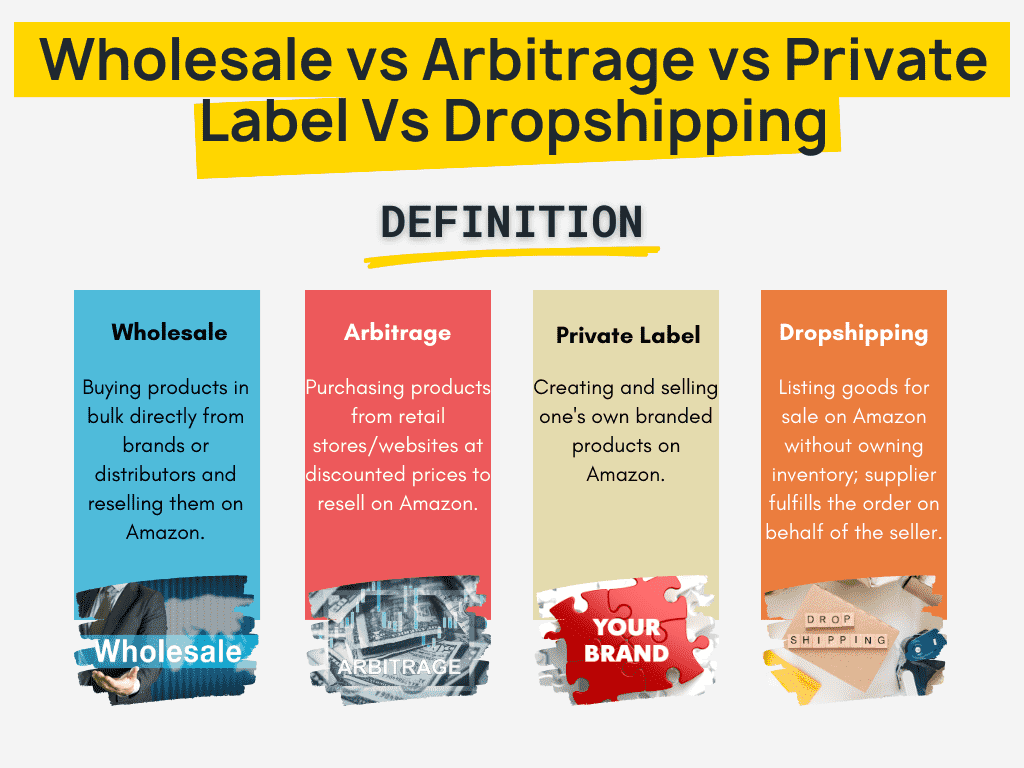

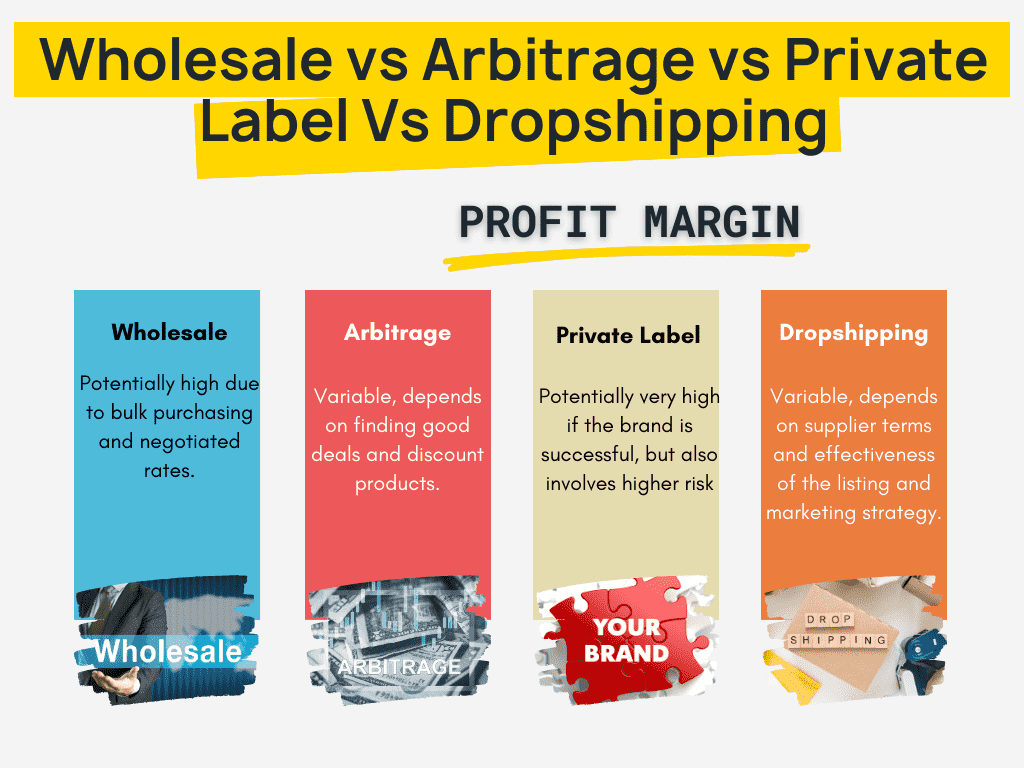
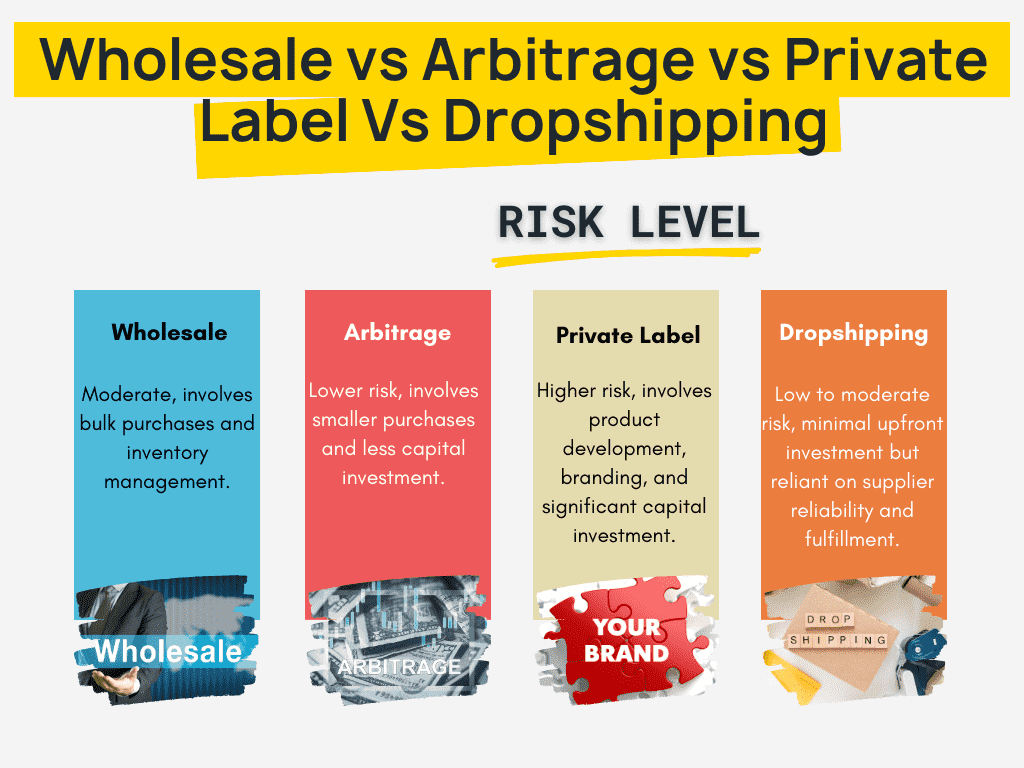
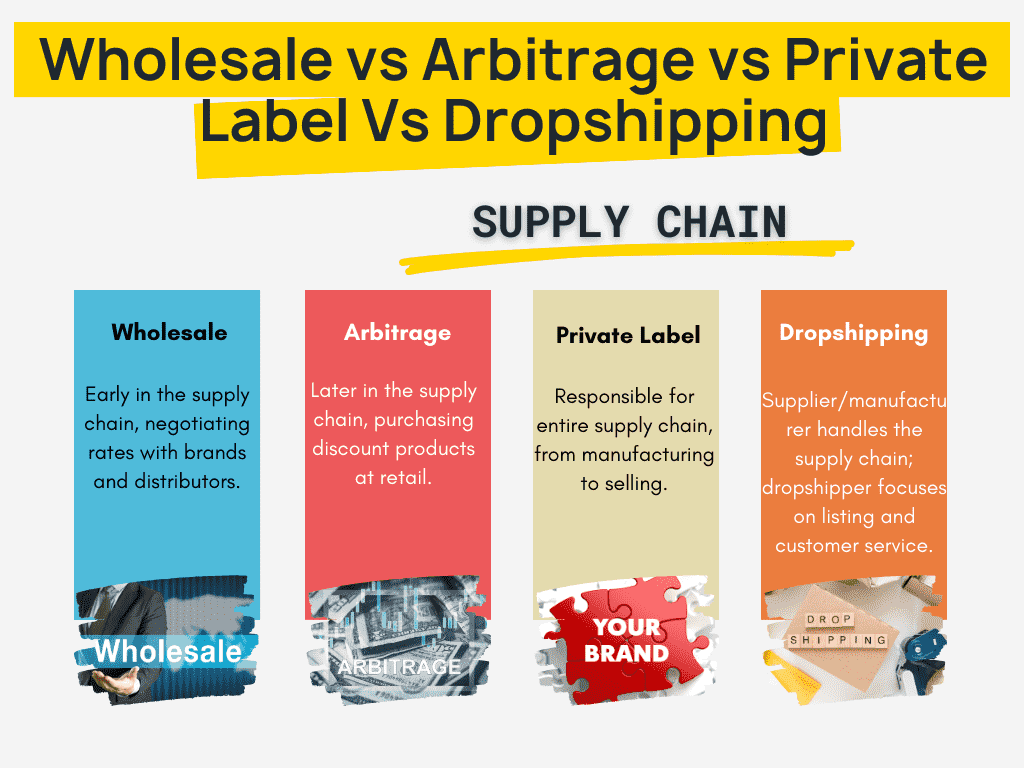

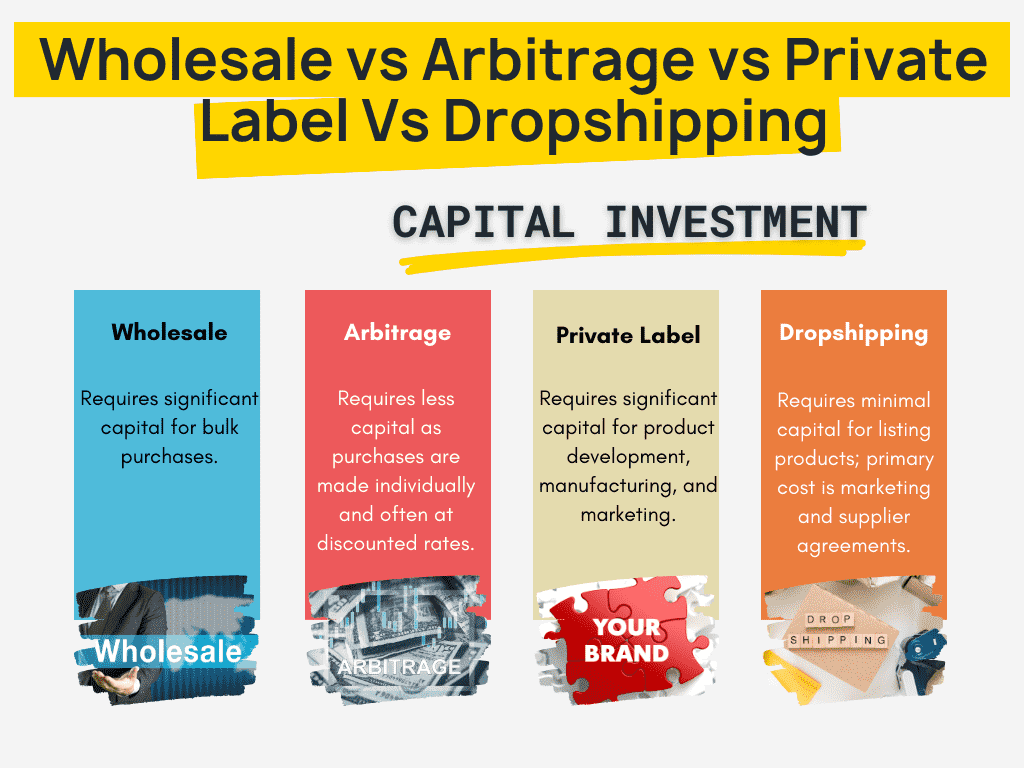
10 Tips for Outsourcing Products to Sell on Amazon
Outsourcing products effectively requires following best practices to avoid costly mistakes and streamline the process. From thorough research to careful supplier evaluation, each step is vital for sourcing quality products and minimizing risks.
Tip 1: Conduct Thorough Research
When sourcing products to sell on Amazon, it’s crucial to search across multiple platforms for the best options. Expand beyond just Amazon, use sites like Alibaba, AliExpress, and more to discover a variety of suppliers.
Social media platforms like LinkedIn, Facebook, and Instagram can also help you find suppliers and identify trending products. Persistence is key, so don’t settle after one attempt; keep reaching out to suppliers until you find the right fit.
Tip 2: Get a Large Number of Proposals
Aim to collect more proposals than you think you need, up to 30 in China and 60 in other regions. This gives you valuable negotiating power and helps you understand the true market price for your product.
A broad range of proposals allows you to compare prices, quality, and terms, giving you the flexibility to choose the best supplier. It also increases your chances of finding a supplier with unique capabilities or better lead times that suit your needs.
Tip 3: Perform Background Checks
Performing background checks on potential suppliers is essential to avoid costly mistakes. Many suppliers may seem reliable, but there are risks involved in trusting them without verifying their legitimacy.
Make sure the supplier is a registered business and holds any necessary export licenses, especially when sourcing from places like China. Check reviews, research their financial standing, and investigate any legal issues to ensure you’re partnering with a trustworthy manufacturer.
Tip 4: Verify Supplier Capabilities
Believing a supplier can provide what they claim without verification is a risky mistake. Always ask if they have experience supplying the exact product you want to sell.
Request specific confirmation, such as “Yes, we have successfully supplied this product to other sellers”. This ensures you’re dealing with a supplier with actual experience and isn’t just offering empty promises.
Tip 5: Prioritize Clear Communication
Clear communication is key to a successful relationship with your supplier. Evaluate how easy it is to get in touch with them and whether they’re responsive to your inquiries.
If a supplier is constantly giving conflicting information, it could be a red flag. Don’t rely solely on email, pick up the phone for direct conversations, as this fosters better relationships and ensures you get accurate information.
Tip 6: Order and Test Product Samples
Before placing a bulk order, always order samples from your suppliers to evaluate the product quality. This gives you the opportunity to compare different options and determine which supplier offers the best value for your money.
Test the samples thoroughly, just as your customers would, to assess durability, functionality, and overall performance. If a sample doesn’t meet your expectations, it’s a sign that the bulk order might fall short, potentially leading to negative reviews down the line.
Tip 7: Start with a Small Order
While bulk orders often come with discounts, it’s risky to invest in thousands of units up front, especially for a new product. Start with a smaller batch to test demand and gather initial customer feedback. This approach minimizes financial risk while allowing you to refine the product if needed.
If the product performs well, you can scale up with confidence. On the other hand, if sales are slow or issues arise, you’ve limited your losses and can pivot more easily.
Tip 8: Negotiate Payment Terms
Avoid paying 100% upfront when placing an order, this is a high-risk move. Instead, negotiate payment terms that protect your investment and ensure quality throughout the production process.
A common approach is the 30/70 split: 30% as a down payment, and the remaining 70% after the product has passed your quality inspection. This incentivizes the supplier to maintain high standards, knowing they won’t receive full payment until you’re satisfied with the final product.
Tip 9: Focus on Building Long-Term Relationships
A reliable supplier is more than just a product source, they’re a business partner. Treat your communication with suppliers professionally and express your interest in a long-term partnership. This can lead to better pricing, priority production slots, and improved quality control over time.
Good suppliers are willing to work with you to improve products and meet your needs. If a supplier is difficult to communicate with or seems uninterested in long-term collaboration, they may not be the right fit for your business.
Tip 10: Don’t Rush the Process
Finding the right product and supplier requires patience and careful consideration. Rushing into a deal without thorough research can lead to poor-quality products or logistical issues down the road.
Take your time to evaluate every aspect of the sourcing process. Don’t hesitate to walk away from a supplier who doesn’t meet your standards, it’s better to delay than to face bigger problems later.
Effectively Outsource Products to Sell on Amazon
Outsourcing products to sell on Amazon can be an effective strategy for scaling your business, but it requires careful planning, research, and attention to detail. From choosing the right sourcing method to selecting reliable suppliers, each step has a significant impact on your success.
By following the tips outlined in this guide, from conducting research and negotiating payment terms to prioritizing long-term supplier relationships, you can minimize risks and position yourself for sustainable growth. Remember, outsourcing isn’t about rushing into a deal, it’s about finding the right partners and products that align with your business goals.
Need help optimizing your selling strategy after outsourcing your products? Reach out to our full-service Amazon agency—we specialize in helping sellers enhance their listings, drive traffic, and increase sales.







